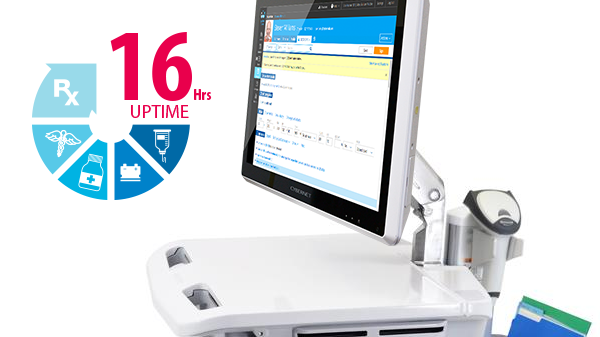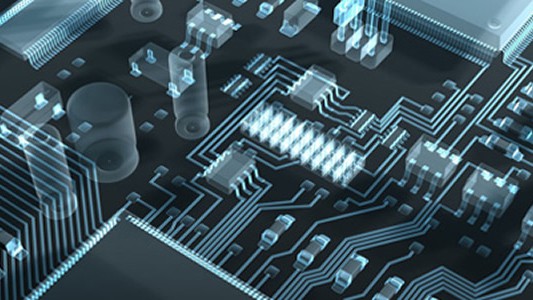The implementation of artificial intelligence (AI) in healthcare has been one of the most revolutionary changes for the sector in decades. Already, AI is used in everything from training healthcare workers to managing EHRs on a medical tablet to assisting surgeons in the operating theater. AI’s ability to observe, compare, and analyze vast quantities of data makes it an incredibly flexible tool for healthcare workers around the world.
Now, Cybernet Manufacturing is proud to announce that its hardware is helping to enable two new AI-powered medical devices. While these devices serve very different purposes, they both rely on AI to help providers identify early warning signs of dangerous conditions, ensuring they do not go unnoticed. And in both cases, Cybernet-designed and built hardware provides the reliable backbone for these devices.
AI In Endoscopy: Identifying Threats Early
Article Guide
The first of our two use cases is in endoscopic procedures. Cybernet has developed a specially-made monitor and computer that works with AI software to identify and display potential lesions during colonoscopies. This technology makes early detection of potentially cancerous growths easier for providers, helping them identify lesions sooner and saving lives.
Neoplastic Lesions, Colonoscopies, And How AI Helps
Colorectal cancer is the third-most common type of cancer in the United States for both men and women, with over 150,000 new cases every year. It is also one of the most common causes of cancer deaths, with an expected 52,550 deaths in 2023 alone.
Fortunately, this number is dropping thanks to improvements in early detection and treatment. Colonoscopies are used to examine a patient’s colon and identify premalignant lesions. Once identified, these lesions can easily be removed. Identifying lesions and determining if they are neoplastic or non-neoplastic, however, can be challenging even for experienced providers. An estimated quarter of all colorectal neoplastic polyps go unspotted by endoscopists.
This is where AI comes in. Having been trained on over 10,000 endoscopic images of lesions, and vetted by expert endoscopists, the AI can identify potential lesions faster than a human can. After identifying the lesion, the system marks it for the endoscopist on the screen, highlighting it in real time. It will also take a picture of the lesion, making it easier to identify future lesions in the patient.
Technical Specifications
Providing an AI-enhanced video feed in real-time requires serious processing power, which is why Cybernet built one of its most capable medical computers yet designed. The components of this device are:
- Processor: Intel i9-12900E
- GPU: Nvidia RTX A4500 (For heavy AI processing)
- Memory: 32GB DDR5
- Data Storage: 512GB SSD
- Integrated capture card for live video feed
Together, these components represent some of the most advanced computer parts currently available. Intel i9 processors and DDR5 memory are usually only seen in the most demanding tasks for computers, such as digital video editing and 3D animation. In this application, we knew that only the most powerful computer components would suffice.
The star of the show, however, is the Nvidia RTX A4500 graphics processing unit (GPU). GPUs are typically employed in PCs dedicated to gaming, where their ability to run multiple processes in parallel lets them render entire virtual worlds. This parallel processing also makes them excellent at machine learning and AI algorithms, which rely on comparing thousands of images to recognize patterns between them. This is what enables the AI program to recognize colorectal lesions so quickly, as it compares images from the live video feed to its “memory” of what a colorectal lesion looks like.
But analyzing colorectal lesions isn’t the only place Cybernet’s hardware is making a difference. From the depths of the human body, we now transition to the surface of the skin, where we’ve contributed to the creation of a device that can measure the smallest changes in the body’s blood vessels.
AI and Assessing Microcirculation
Microcirculation is the flow of blood through the smallest vessels in the body’s circulatory system. These capillaries, arterioles, and venules are often the first part of the circulatory system to be affected by disease or medication. Detecting these changes and determining if they are positive or negative, however, is another challenge.
AI-Powered Microcirculation Examination
Once again, AI is used to achieve what the human eye cannot. By using visual data from a video microscope and spectrometer, the AI software can examine capillaries in a person’s skin, monitoring for optical markers of oxygen delivery. These markers, like functional capillary density (FCD), capillary flow velocity (CFV), and oxygen saturation of microvascular erythrocytes (SmvO2) are all important indicators of how strong and healthy a patient’s blood flow is.
By comparing this data from before and after treatment, providers can identify if a patient’s condition is improving or worsening. In the latter case, it can serve as an early warning, alerting healthcare workers that their treatment isn’t working and they need to try something different.
Technical Specifications
Once again, Cybernet Manufacturing was called upon to build a device capable of supporting this AI software. Our solution was this:
- Processor: Intel i5-1145G7
- GPU: Integrated Intel Graphics for AI processing
- Memory: 16GB DDR4
- Data Storage: 512 GB SSD
- Integrated spectrometer and microscope
You may notice that this device is not as powerful as the prior computer. That is for two important reasons. First, the microcirculation examiner does not need to work in real time. Instead, it collects image data from the spectrometer and microscope, and then spends several minutes reviewing the data before determining what changes have occurred.
Secondly, and most critically, is that the device is handheld. By being smaller and lighter, it is far easier to transport and use. A healthcare provider can scan the patient’s capillaries with the attached spectrometer and microscope, rather than bring the patient to the machine, and get the results within minutes. The procedure is also completely noninvasive, meaning patients can be treated more quickly and more comfortably.
If this technology sees widespread adoption, it could be used in applications outside of monitoring oxygen delivery in capillaries. Monitoring evolving sepsis, determining the toxicity of chemotherapy, and assisting extracorporeal membrane oxygenation are just a few potential use cases for this technology.
Conclusion
With AI becoming increasingly more available and versatile, it will only become more common in the healthcare world. We may soon see machine-learning algorithms supporting healthcare providers in almost every step of the patient treatment process. No matter what the end-use may be, Cybernet Manufacturing is ready to provide reliable and powerful hardware solutions for AI-powered healthcare software.
If you’re looking for a medical computer manufacturer to partner with or would like to learn more about our products, contact the experts at Cybernet Manufacturing. Our staff are ready to discuss our qualifications as a partner and equipment manufacturer.
Join the conversation and connect with us on this and other relevant topics – Follow us on Facebook, Twitter, and LinkedIn.
Advantages of Powered and Non-Powered Medical Carts
February 14, 2018
Any hospital or clinic will have a range of technology products to assist in patient care. Sometimes a hospital's budget restraints can't afford the latest in technology, so they opt for more financially viable…
0 Comments5 Minutes
4 Ways That AI will Affect Medical Computer Systems
August 28, 2018
The term “artificial intelligence” conjures images straight out of science fiction blockbusters: super-smart machines controlling all aspects of life, and often running wild to destroy their human creators. In reality,…
0 Comments6 Minutes
You Can't
Learn from a Pop-up
But we can deliver knowledge to your inbox!
We dive deep in the industry looking for new trends, technology, news, and updates. We're happy to share them with you.
Knowledge, News, and Industry Updates Right in Your Inbox




